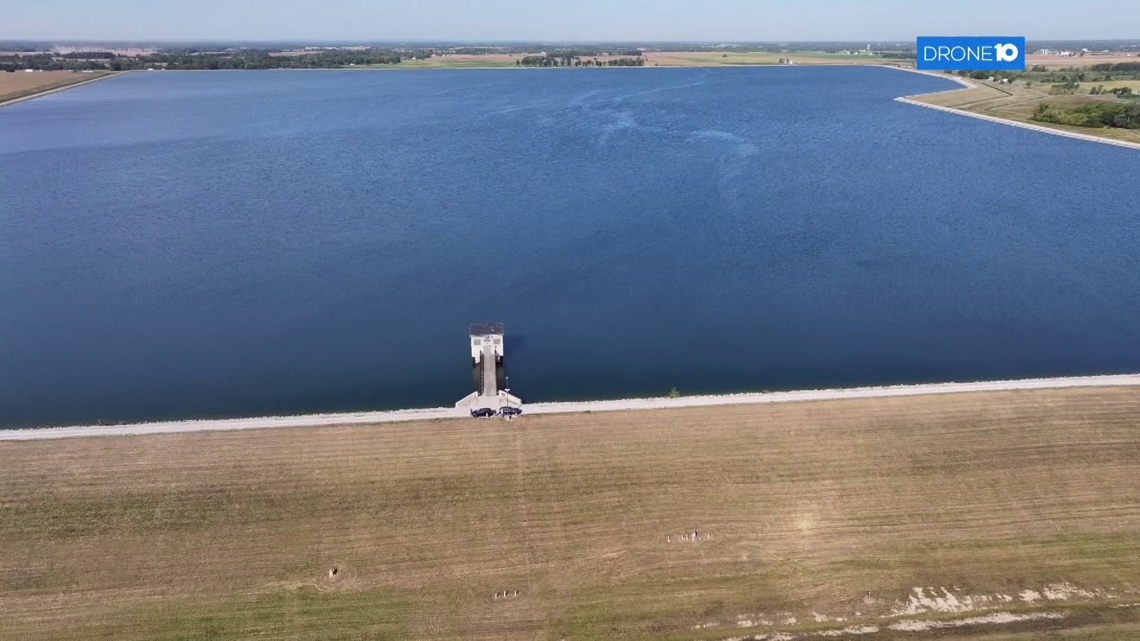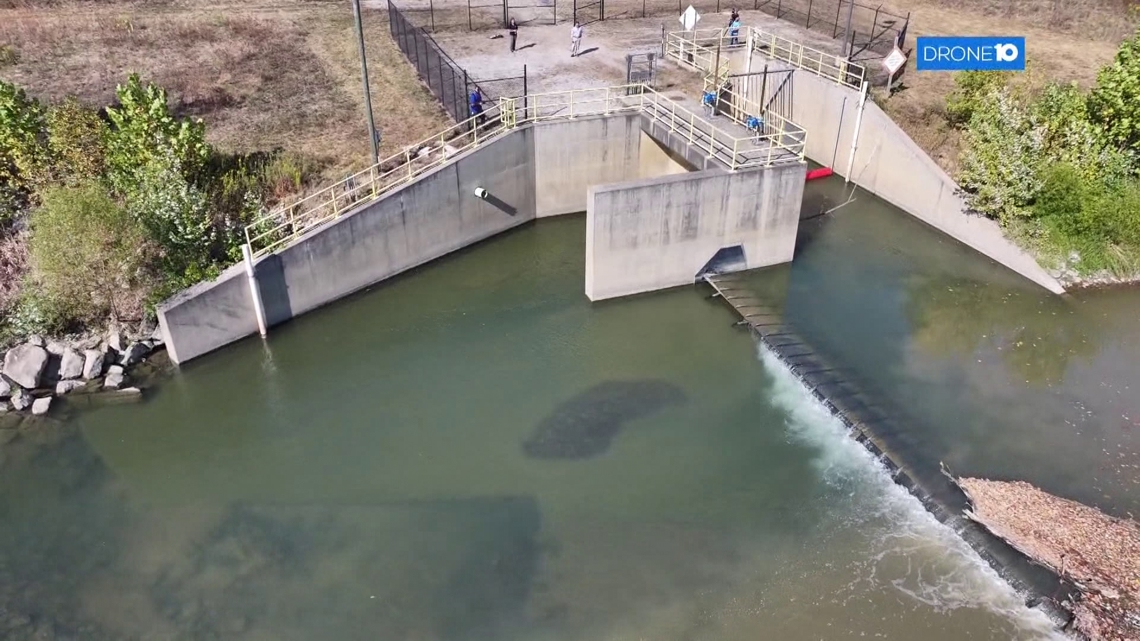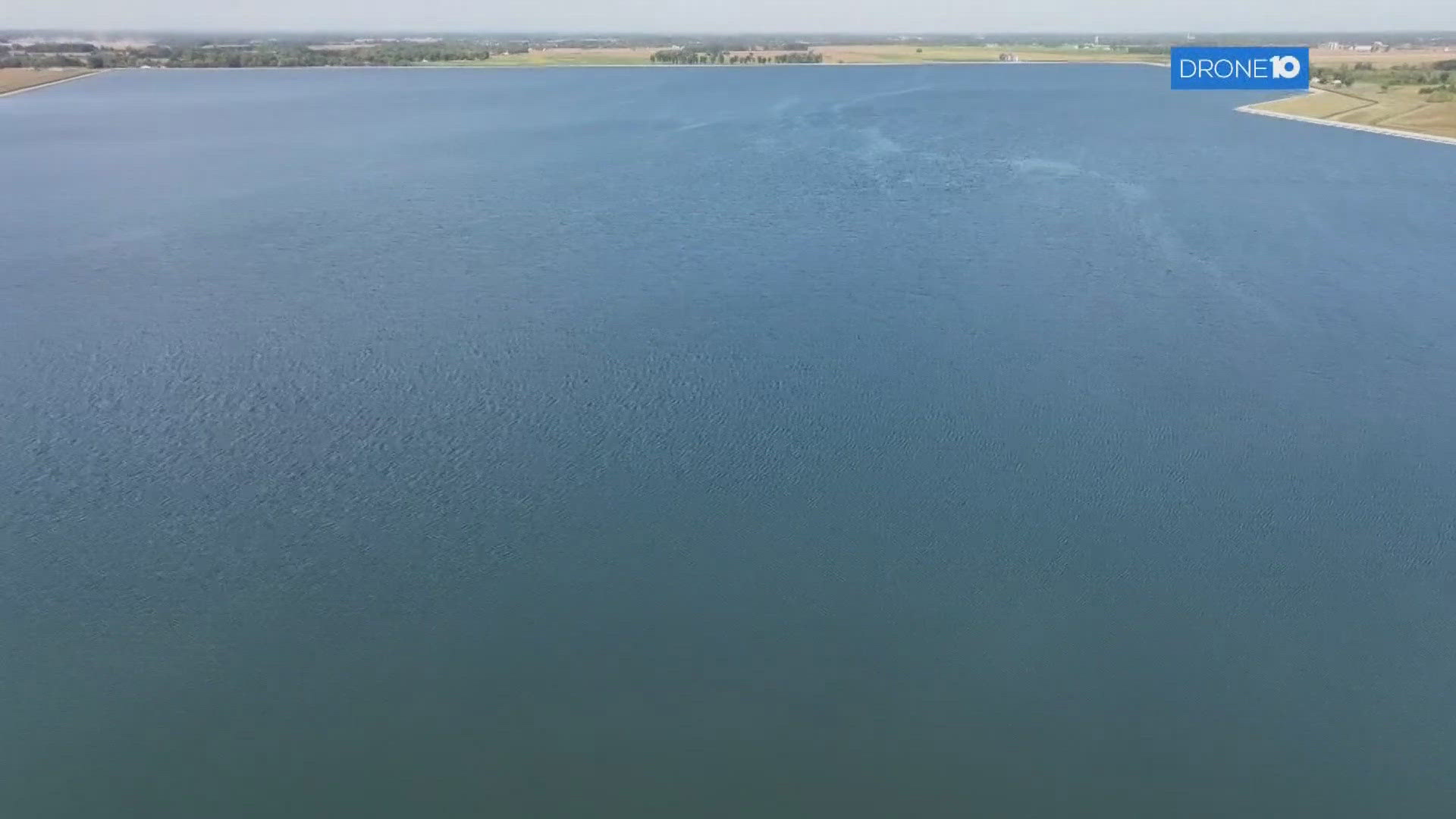DELAWARE COUNTY, Ohio — The impacts of an extremely dry summer continue to add up in central Ohio as drought conditions keep expanding around the region.
It's only natural to wonder how much longer we can go before the need for restrictions on water use is necessary to help cope with the lack of rainfall. The good news for those in and around Columbus is that point, assuming an unending drought, is well off into 2025.
That's because a reservoir you've probably never heard of, and are even less likely to have seen the waters of, is helping to keep the Scioto River flowing and Franklin County supplied with plenty of water.


The John R. Doutt Upground Reservoir, located in rural northwestern Delaware County, was opened in the 2010s as a response to a drought back in 1988. Back then the city of Columbus came close to running out of water.
"Back in the drought of 1988, the city of Columbus actually almost ran out of water. So the city planners at that time needed to figure out what we needed to do to meet the demands for the future in the growing city. So we came up with a plan called Water Beyond 2000," said Matt Steele, the assistant administrator for the Columbus Division of Water.
He said the recommended plan was to construct three off-stream reservoirs for additional water supply
Doutt is the only one in operation now, but the city already owns the land to build two more sites to handle water demands as the city of Columbus grows into the future.
This supplemental supply has only been tapped a few times since coming online in 2014, but it was built to handle many months of demand before needing to be replenished.
"This reservoir actually holds more water than Griggs and O'Shaughnessy reservoirs combined. It has a total capacity of eight billion gallons of water that's available for water supply. And right now we're releasing around 30 million gallons per day. So the water supply in this reservoir, at the current release rate, is over 250 days," Steele said.


That means water restrictions for those using the Columbus water supply are not only not in place at this time, but are not expected to be issued either. While this is great news for local residents, Steele also doesn't want to encourage reckless use of the supplies we have in place.
"Water is a precious resource, and we always encourage conservation. Not only for conservation for a water supply standpoint, but also conservation because, you know, we don't want people just wasting water. For one, it increases their water bill, and the other, it utilizes our precious resource when we don't need to utilize it," he said.
For now though, you can rest easy knowing the lessons of the past were learned and Columbus is prepared not only for our current drought, but for our continued growth and potential droughts well into the future.
-- Meteorologist Michael Behrens
Follow me on social media! Facebook Meteorologist Michael Behrens, X/Twitter @MikeBehrensWX, and Instagram/Threads @MikeBehrensWX.
Email me at: MBehrens@10tv.com

